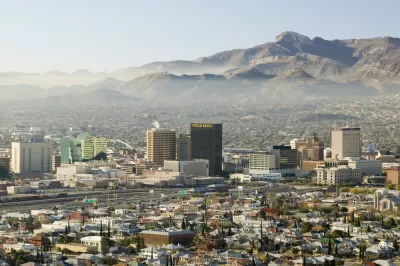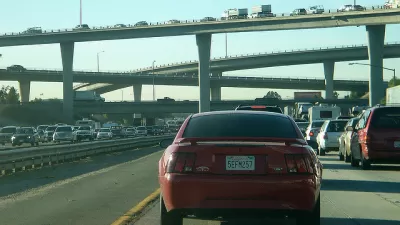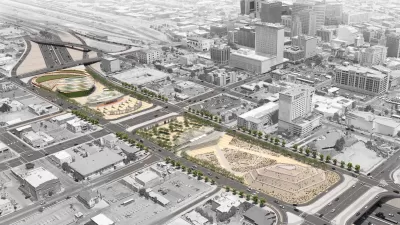An independent review of TxDOT's proposed expansion of I-10 through downtown El Paso highlights several flaws and a price tag close to $800 million.

A third-party review of the Texas Department of Transportation's plan to expand Interstate 10 through downtown El Paso "found expanding I-10 in the Downtown area would not reduce congestion, instead it would bring more short local trips onto the freeway," reports Jennifer Cuevas.
"For his review, Norman Marshall, president of Smart Mobility Inc., looked at traffic data, speed count and the TxDOT El Paso Regional Modeling Files for the 2045 Metropolitan Transportation Plan." This doesn't surprise transportation planners who warn that building more lanes simply induces more driving and increased congestion. "Of the two additional lanes TxDOT has proposed, one would serve as a general purpose lane and the other as a transit-adaptive lane," Cuevas writes. "The problem with the transit-adaptive lane is TxDOT has not explained in detail what their purpose would be, according to Marshall."
"Rather than expanding, one of Marshall’s recommendations is to consider a street collector distributor concept to the west of Downtown." This approach would "keep the local traffic off the road, you keep it on the streets and therefore you let the freeway operate as an express facility," writes Marshall in the report. The report also adds that "The major issue with the I-10 Segment 2 Expansion Proposal review is it’s based on the Metropolitan Transportation Plan for 2045, instead of the MTP 2050 plan."
FULL STORY: Proposed expansion in I-10 Downtown could cost over $780 million

Study: Maui’s Plan to Convert Vacation Rentals to Long-Term Housing Could Cause Nearly $1 Billion Economic Loss
The plan would reduce visitor accommodation by 25,% resulting in 1,900 jobs lost.

North Texas Transit Leaders Tout Benefits of TOD for Growing Region
At a summit focused on transit-oriented development, policymakers discussed how North Texas’ expanded light rail system can serve as a tool for economic growth.

Why Should We Subsidize Public Transportation?
Many public transit agencies face financial stress due to rising costs, declining fare revenue, and declining subsidies. Transit advocates must provide a strong business case for increasing public transit funding.

How to Make US Trains Faster
Changes to boarding platforms and a switch to electric trains could improve U.S. passenger rail service without the added cost of high-speed rail.

Columbia’s Revitalized ‘Loop’ Is a Hub for Local Entrepreneurs
A focus on small businesses is helping a commercial corridor in Columbia, Missouri thrive.

Invasive Insect Threatens Minnesota’s Ash Forests
The Emerald Ash Borer is a rapidly spreading invasive pest threatening Minnesota’s ash trees, and homeowners are encouraged to plant diverse replacement species, avoid moving ash firewood, and monitor for signs of infestation.
Urban Design for Planners 1: Software Tools
This six-course series explores essential urban design concepts using open source software and equips planners with the tools they need to participate fully in the urban design process.
Planning for Universal Design
Learn the tools for implementing Universal Design in planning regulations.
City of Santa Clarita
Ascent Environmental
Institute for Housing and Urban Development Studies (IHS)
City of Grandview
Harvard GSD Executive Education
Toledo-Lucas County Plan Commissions
Salt Lake City
NYU Wagner Graduate School of Public Service





























